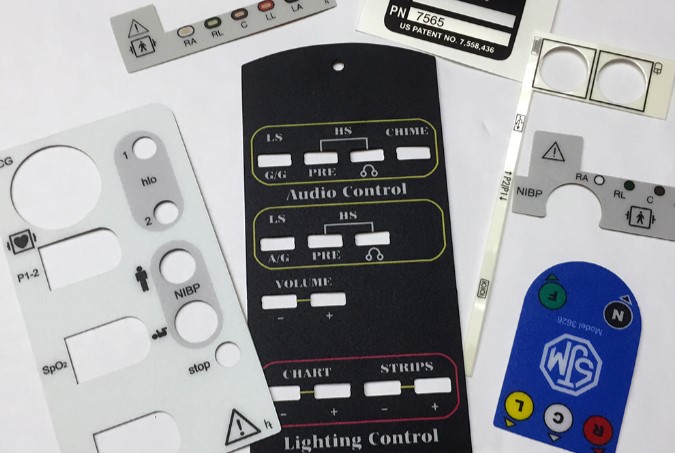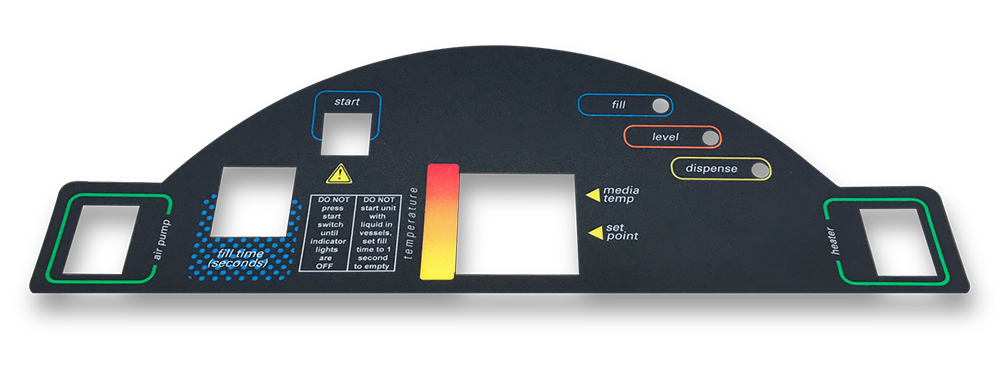The Difference Between Regular and Long-Lasting Graphic Overlays
The Difference Between Regular and Long-Lasting Graphic Overlays
Blog Article
Recognizing Just How Graphic Overlays Job to Enhance Your Innovative Tasks
Graphic overlays offer as a crucial element in the world of imaginative jobs, enhancing both visual interaction and target market involvement. The successful integration of these overlays needs cautious consideration of layout principles and purposes.
What Are Graphic Overlays?
Graphic overlays are visual components that are placed on top of a base photo or user interface to enhance communication and customer experience. They serve numerous objectives, including supplying added information, directing user interaction, and enhancing aesthetic appeal. Typical applications of graphic overlays can be located in digital interfaces, advertising and marketing, and instructional materials.

Graphic overlays are commonly developed using layout software program, permitting designers to control transparency, shade, and size to accomplish the desired result. They can be dynamic or fixed, with computer animations that attract the customer's eye and improve interaction. The strategic usage of graphic overlays not only enhances aesthetic pecking order yet additionally help in supplying a clear and systematic message. Because of this, understanding how to effectively execute visuals overlays is critical for designers intending to elevate their innovative projects.

Advantages of Using Graphic Overlays
Making use of graphic overlays can significantly boost the performance of aesthetic communication across various tools. Among the key advantages is the ability to convey complicated information succinctly. By layering graphics, message, and photos, overlays promote the presentation of data in a more digestible format, making it simpler for target markets to understand essential ideas swiftly.
Additionally, graphic overlays can improve aesthetic appeal, accentuating particular components within a style. This is specifically advantageous in marketing and advertising, where capturing the viewer's rate of interest is vital. The tactical use shades, forms, and typography in overlays can develop a appealing and cohesive aesthetic story, enhancing brand name recognition.
In addition, visuals overlays give adaptability in style. They allow designers to adapt content for different platforms without going back to square one, making sure uniformity throughout various networks. This adaptability is critical in today's digital landscape, where web content must be enhanced for diverse devices and layouts.
Kinds Of Graphic Overlays
When thinking about the different sorts of visuals overlays, it is vital to recognize their varied applications across different markets. Graphic overlays can be classified mostly right into three types: functional, ornamental, and educational.
Useful overlays are developed to boost the usability of an item. Typically found in digital tools, these overlays usually provide tactile responses via elevated switches or distinctive surfaces, boosting individual communication. They can also act as a safety layer, guarding the underlying components from deterioration.
Ornamental overlays concentrate on visual enhancement, enabling brand names to share their identity via vibrant styles and custom graphics. These overlays are common in packaging, advertising, and point-of-sale materials, where visual appeal is important for bring in clients.
Informative overlays, on the other hand, are made use of to share vital information or directions. They can be seen in applications such as signs, individual manuals, and training graphics, where clearness and readability are paramount.
Each type of graphic overlay offers a distinct function, adding to the total efficiency of creative jobs while attending to specific requirements within different markets. official statement Understanding these distinctions is crucial for selecting the ideal overlay for your job.
Finest Practices for Execution
To ensure the successful execution of graphic overlays, it is critical to develop a clear understanding of the task's goals and the certain needs of the end-users. Begin by performing extensive research to recognize the target market and their preferences, as this will inform design options and capability.
Following, produce an in-depth strategy that outlines the overlay's assimilation, format, and objective process. This plan needs to include interface considerations, making certain that overlays boost instead than obstruct the customer experience - Graphic Overlays. Take into consideration the visual hierarchy and preserve consistency in style aspects, such as color plans, icons, and fonts, to promote brand comprehensibility
Evaluating is vital; explanation gather responses from a depictive example of individuals to identify potential problems and areas for improvement. Iterate on the style based upon user input and performance data. Additionally, make sure compatibility throughout different gadgets and platforms to take full advantage of access.
Tools for Creating Overlays
Producing efficient graphic overlays needs the right tools to translate style concepts right into functional applications. Various software and systems are available, each customized to particular requirements and ability levels.
Adobe Photoshop and Illustrator are sector requirements, offering substantial abilities for producing and manipulating overlays. These tools offer sophisticated attributes such as layer management, blending modes, and vector graphics, making it possible for designers to create elaborate and premium overlays.
For those seeking a more straightforward technique, Canva and Figma are excellent alternatives (Graphic Overlays). Canva's user-friendly user interface allows customers to produce overlays quickly using pre-designed templates, while Figma facilitates collaborative layout in real-time, making it ideal for teams
Furthermore, open-source choices like GIMP and Inkscape give robust functionalities without the connected prices of exclusive software application. These devices permit for flexibility in design and can fit numerous data layouts, guaranteeing compatibility throughout different platforms.

Final Thought
To conclude, visuals overlays work as powerful tools for boosting imaginative projects by supplying visual clarity, aesthetic appeal, and brand consistency. Their varied applications, ranging from practical to ornamental, highlight their versatility in communication. Abiding by best practices and utilizing proper tools makes sure reliable execution and makes the most of the influence of overlays. By understanding the basic concepts and benefits related to graphic overlays, developers can significantly boost the high quality and effectiveness of their visual interactions.
Graphic overlays offer as a crucial component in the world of creative projects, boosting both aesthetic interaction and audience engagement.Graphic find more information overlays are commonly developed utilizing layout software program, enabling developers to control size, shade, and openness to achieve the preferred impact.Moreover, graphic overlays can increase aesthetic allure, drawing focus to particular aspects within a style.Additionally, visuals overlays supply versatility in design.In conclusion, visuals overlays serve as effective devices for improving creative tasks by giving aesthetic quality, visual allure, and brand consistency.
Report this page